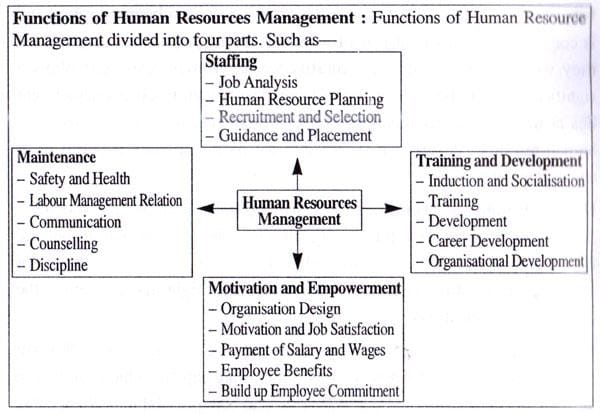Introduction
An estimated 43 percent of people around the globe are under the age of 25. Investing in young people is critical for seizing the demographic dividend. South Korea, Singapore, Taiwan, and Thailand experienced spectacular economic growth during the second half of the 20th century, much of which was due to the demographic dividend. The economy of Bangladesh has been showing improvement. Therefore, Bangladesh can take full advantage of the demographic dividend. However, many developing countries, including Bangladesh will not be able to achieve this economic benefit without appropriate policies and substantial investments in some areas.

Demographic dividend
The demographic dividend is the economic growth resulting from country’s declining mortality and fertility and subsequent changes in the age structure of the population. Demographic dividend occurs when the majority of the population is working age and can contribute to the country’s economy. Economists have identified four possible ways for the benefits of the demographic dividend. The first is the increased labor supply; however, the magnitude of this benefit will depend on the ability of the economy to absorb and productively employ the additional workers. The second is increased savings (resulting from reduced dependency ratio). The third is human capital. The fourth is the growth in domestic demand caused by the rise in per capita income and the reduced dependency ratio.
As per the latest population census, 33% of Our people now belong to age group 0-14 years, while 18.8% population belong to age group 15-24 years and 37.6% belong to age group 25-54 years. It means that, after 15 years, most of our population will be in the workforce. Surely, we can take advantage of this transition. However, there are some challenges related to those seemingly favorable demographics. The first is finding jobs for all these people. Second, and more importantly, our young people will need to develop the right skills for the modern job market. The critical question is –
Are we ready? How well are we prepared for the ‘demographic dividend”?
How does the demographic dividend help?
The demographic dividend is delivered through several mechanisms such as:
Labor Supply
The generations of children born during periods of high fertility, have finally crossed the dependent years and can become technically trained workers. Now women have fewer children than before; they can take jobs outside the home; they also have a trend to be better educated than older cohorts, and they are, therefore, more productive in the labor force.
Savings
Adult working-class trends to earn more and can save more money than the very young. The shift away from a very early age distribution favors greater personal and national savings. Personal savings grow and serve as a partial resource for industrial investments that fuel economic growth.
Human Capital
Having fewer children improves the health of women. Their participation in the labor force develops their social status and personal independence. Parents are under less strain to provide financial Support to many children. Family income can be focused more on better food for infants, including girls who are often given less to eat. Incomes can be utilized for higher education for teenagers of both sexes to improve their life prospects.
Encash demographic dividend in Bangladesh
Favorable policies are required to encash demographic dividends in Bangladesh. The demographic dividends are not automatic. To realize the dividends, Bangladesh will need educated, healthy and productive labor force. These partly depend on the policies of the government to build human capital, create a favorable environment for investment and encourage savings. The following issues need particular attention:
– A high share of Working-age people (both male and female) is beneficial if only those people are employed. If they are unemployed, the outcome will likely be problematic. Labor market policies must encourage employment. In this regard, open economies, flexible workforces and modern institutions that can gain the confidence of the people and markets alike may help countries reap the potential benefit created by their demographic transition.
– Women who are educated are more likely to work outside the home and, they are increasing the size of labor force and the potential for economic development. Enforcing policies that enable girls to go to school and equip them with skills to compete for higher-paying jobs is an important step toward gender equity that also fosters economic growth.
– Sound macroeconomic management is the critical issue. An economy that has persistently high inflation is unlikely to be able to take the best possible advantage of a large segment of working-age people.
– Many countries have benefited by expanding their exports, and a large Working age population can benefit by having a country’s products in the external market. Nevertheless, imports, unless carefully handled, have the potential to wreak havoc on the lives of millions of workers and their families.
– Relationship with other countries and with international financial institutions will determine the future external resource generation and can be necessary for extending economic growth.
– Appropriate infrastructure, logistics, and legitimacy are required at government institutions.
However, demographic dividend depends on the policies the country chooses and on its political and economic relationships with rest of the world. The political leaders have to move fast to formulate education strategy and comprehensive financial plan to capture the once-in-lifetime opportunity.
Demographic dividend: an opportunity for Bangladesh
Bangladesh is now in the third stage of the demographic transition. It is projected that Bangladesh’s population has reached its replacement level of fertility rate (TFR = 2.2) by 2015. It is estimated that dependency ratio will decline from 0.55 in 2011 to 0.45 in the next fifteen years in Bangladesh. If this opportunity is duly utilized, there is a greater potential for demographic dividend through increased savings and investment for faster economic growth in the country.
In other Words, the demographic dividend is a rise in the rate of economic growth due to a rising share of working age population in the country. This usually occurs late in the demographic transition when the fertility rate falls and the youth dependency rate declines. During this demographic window of opportunity, output per capita rises.
Because of declining population growth and following changes in age structure, the proportion of the working-age population is increasing and offering a window of opportunity, referred to as the demographic dividend. The demographic dividend leads to opportunities for growth in output per capita due to increasing proportion of working age group in the total population, increasing the ratio of producers to consumers. Although the demographic transition creates the demographic dividend, it also brings significant challenges with it. Among these are the areas of education, health, nutrition, housing, food, social and political unrest, the status of women and employment. The potential gains from the demographic dividend will be at risk due to continuing poverty and poor living standards. It should be noted that demographic dividend is not pre-arranged. Rather it is an opportunity provided by the age structural transition, Meeting future challenges depends on the ability to take advantage of the window of opportunity offered for a plausibly short period for once in a lifetime with pertinent economic and social policies.
Economic returns are not the role function of the demographic dividend. Three interconnected mechanisms are responsible for the demographic dividend, resulting in economic performance: labor supply, savings and human capital. All these mechanisms, however, depend on the external and internal economic Settings and policy related to the environment of the country.
Bangladesh will enter the best period for realizing the demographic dividend, with the lowest levels of combined child and adult dependence in its history. The golden period will last until around 2033 when the more burdensome adult dependency reaches significant proportions. If the golden years are not used to achieve economic growth and build a good social security system, Bangladesh will face the demographic danger or the demographic time bomb.
Conclusion
Changes in age structure and a decline in fertility are necessary for the demographic dividend. These changes do not happen automatically, but governments, donors, and policymakers can set themselves up to seize the dividend through a series of forward-thinking policy and funding decisions.

